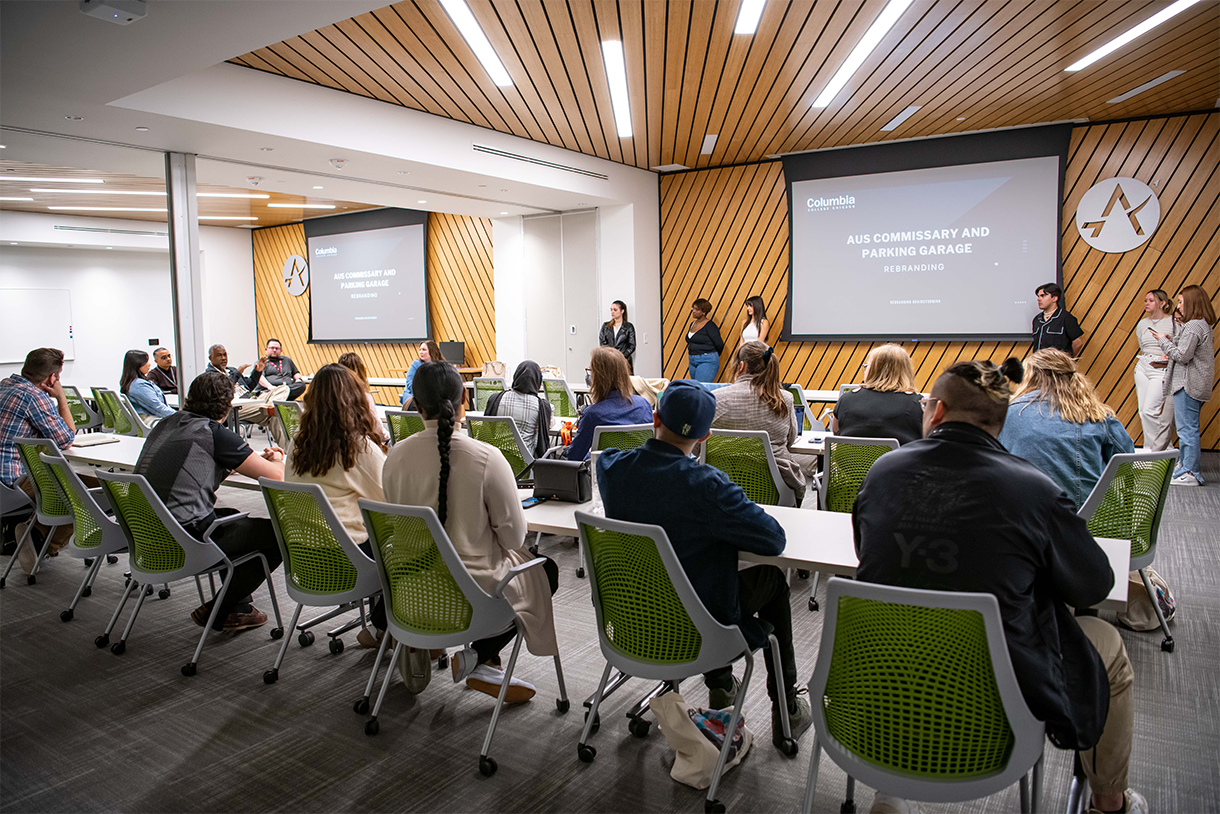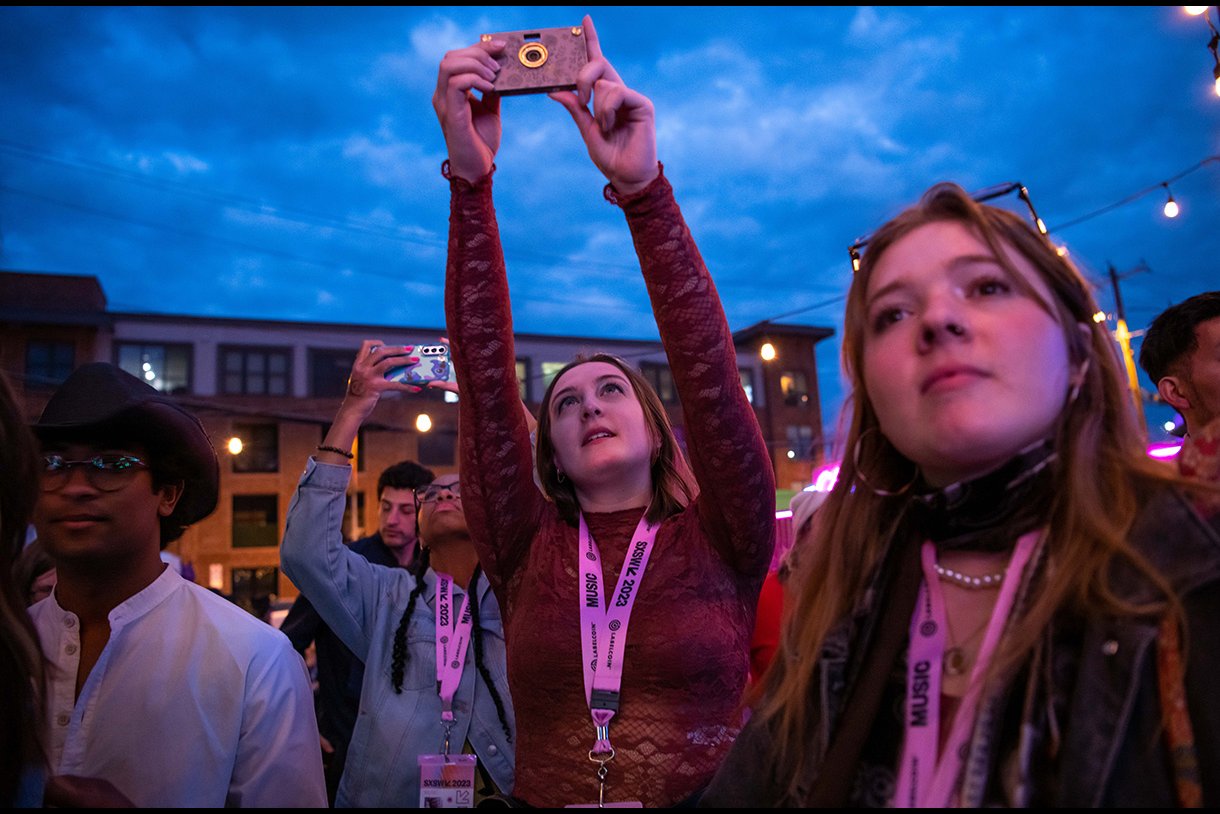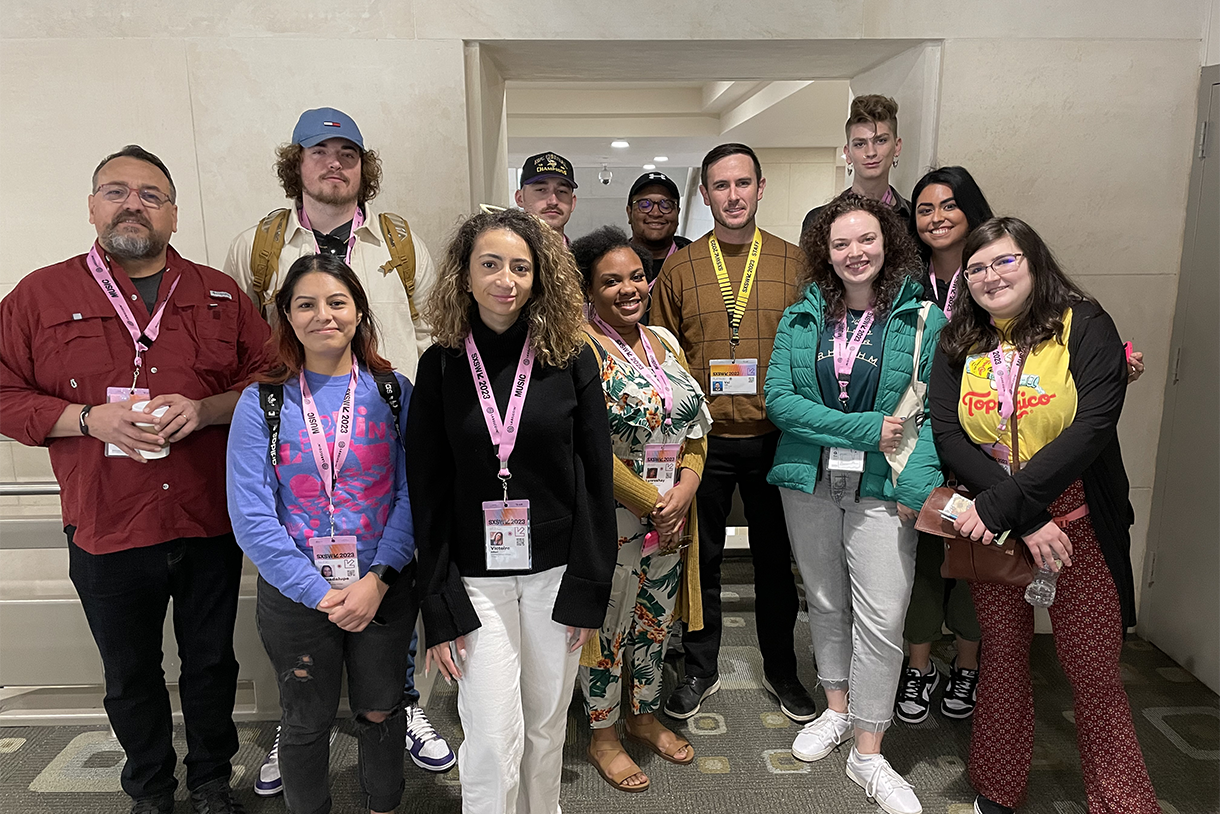Students Help Real-Life Clients Meet Real-World Business Goals at SXSW
What better way to learn about business than to work for real-life clients on achieving real-world business goals? There isn’t one, according to Jerry Brindisi, interim chair of the Business and Entrepreneurship department at Columbia College Chicago. And that’s why client-based projects are the curricular centerpieces for three Columbia practicum classes that went to Austin, Texas, during South by Southwest (SXSW) in March. Each class arrived in Austin with a clear business objective and a client to serve.
Re-Branding Austin Airport Food and Parking
Associate Professor of Instruction Clayton Smith brought his Creative Agency class to pitch their ideas for re-branding concession and parking services to their client Austin-Bergstrom International Airport.
“If the work that our students do is up to their standards, they're going to implement their ideas in Q3 this year,” Smith explains. “So, it's an actual chance to not only create something meaningful, but to meet the client in person to pitch, to get their feedback, and to have that one-on-one connection and hopefully put up work that students could see if they come from the airport later this year.”
The group took the bus to the airport to meet in-person with the airport’s marketing team and executives to share their concepts and get their input.
“They really treated us like peers, which was really important, I think, to me and to my class because … this is actually how it is,” says Senior David Buschauer, a Marketing major. “I felt like I was actually doing important meaningful work.”
Having an actual client for a class project is the main reason Buschauer took the class. “It keeps me involved and integrated into the process,” he says.
Talent Scouting for a Music Licensing Company
Another practicum class — Music Publishing — came to SXSW to look for talent on behalf of a music licensing company.
“We're lucky to work with a company called Musicbed,” says Associate Professor of Instruction Loren Wells. “The students met with the owner prior to coming to SXSW and he told them what he was looking for … what kind of music is actively syncing in television and film right now and advertisements. Students then did their research and identified artists with potential.”
The students’ job at SXSW: To see artist performances, potentially meet the artists, and report back to Musicbed on their recommendations.
Senior Lauren Bayless, who is majoring in Live and Installed Sound with a minor in Music Business, saw multiple live acts while at SXSW and reached out to the artists prior to coming to their shows to make initial contact. “It’s been really cool to have this interactive hands-on experience with them, which I probably wouldn't get otherwise.”
Evaluating Sponsorship Effectiveness for SXSW
It takes big dollars and big sponsors to put on an event like SXSW. Sponsors want a return on their investment and SXSW, like other major events, wants to keep their sponsors happy by helping them achieve their business objectives. Why is that important? “Because sponsorship is expensive and it's expensive to find new sponsors,” says Professor and Chair Emeritus Philippe Ravanas, who brought his Sponsorship practicum class to SXSW.
Working with Val Link, executive director of business development at SXSW, Ravanas’s class came to SXSW to evaluate the objectives of major SXSW sponsors (e.g., Whiteclaw, Slack, Volkswagen), ask why they chose SXSW as a vehicle to meet those goals, assess their presence at the event, and evaluate the sponsor’s overall effectiveness in meeting their goals. Their final assessment will be offered to the sponsors as well as SXSW as a tool to guide them both in future business decision-making.
While in Austin, the class met with Link at the Austin Convention Center to ask him questions about the art of finding sponsors and keeping them. And while the information the students will eventually share with Link about the 2023 sponsors will be useful, Link, a savvy business guy, has another motive in working with Columbia students.
“These are our future customers,” says Link. “It’s really strategic; they are going to go on to be our core demographic.”
Columbia students clearly aren’t the only ones at SXSW with business objectives. And that’s a lesson in itself.



